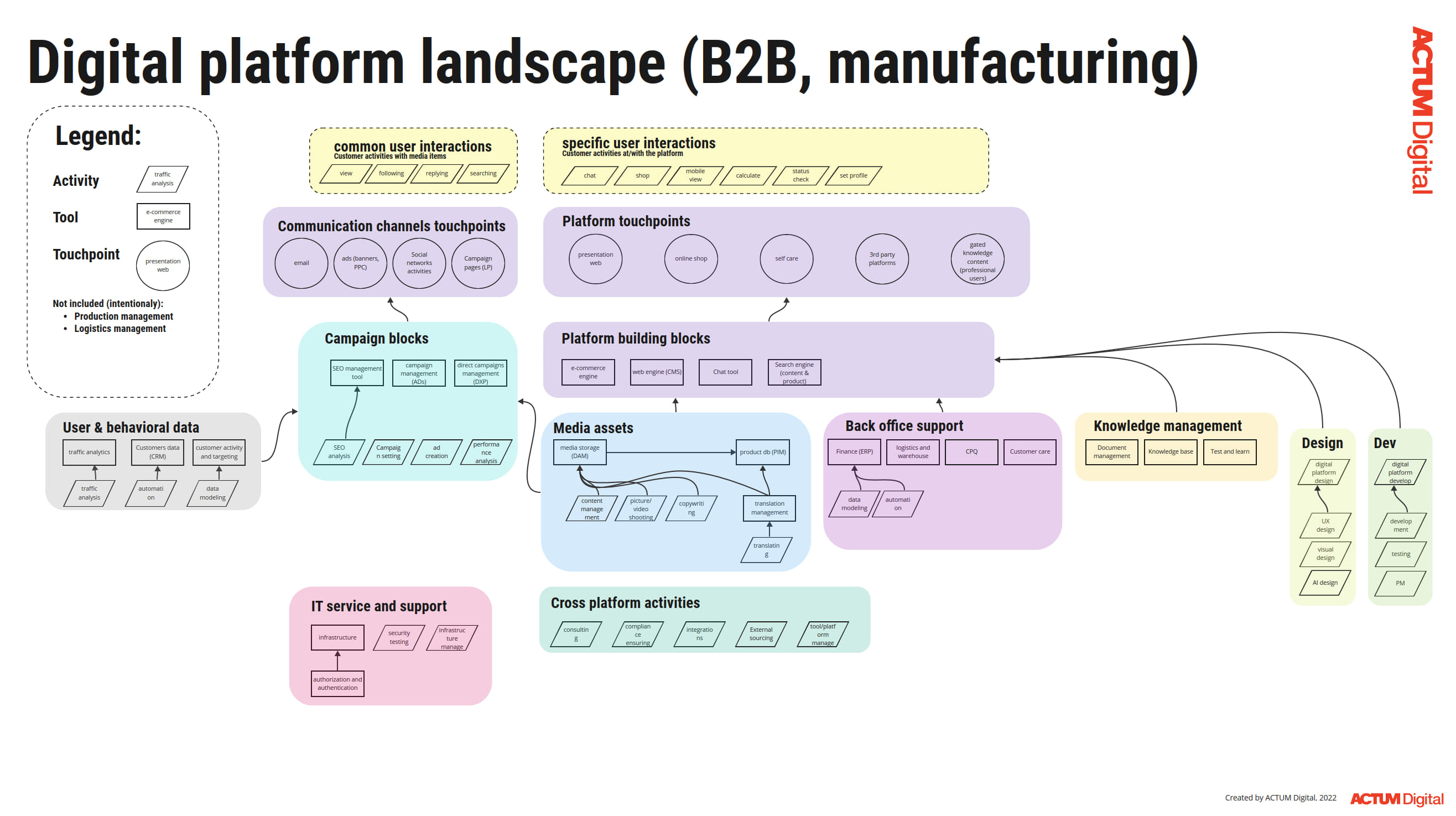The Future is Now: Why You Need to Plan Your Digital Landscape
In today's digital age, companies must take care and look to the future when designing their digital landscape. A well-designed digital landscape is the bedrock on which a company can forge a strong online presence and drive business growth.
What is a digital landscape though?
In the words of ACTUM’s CPO and co-founder Ratibor Libal “In essence, a digital landscape is the sum total of all an organisation’s software and hardware, ranging from things like CRMs all the way to how they store their data. However, it also goes beyond a simple catalogue of technologies. It also shows how they all connect together.”

Unsurprisingly, building the right digital landscape for a particular business is no easy feat. Furthermore, making the wrong choices at this stage can have major repercussions further down the line that can affect every aspect of a business's operations. With sufficient and careful planning, it’s all too easy for companies to find themselves with a landscape that makes future development much harder than it needs to be. In truly dire cases, it’s even possible for companies to find themselves with incompatible tools that makes transferring data a serious challenge. While these problems are not insurmountable, they make everyone’s lives harder and invariably end up affecting a business’s bottom line.
Getting Your Landscape Right
In general, there are two sides to designing a digital landscape, namely, the customer-facing tools and those that’ll be used internally.
Those that face the customer, the touchpoints like the e-shop and website, are an essential element of what motivates people to keep coming back and engaging with a business. This can be achieved through careful planning and design, including user research and testing to ensure that the touchpoints easy to use and meet the needs of the target audience. This isn’t as simple as just looking at the touchpoints themselves though. It’s critical to remember that much of what shapes your customers’ experience is the infrastructure on which your touchpoints are hosted such as your CMS and e-commerce engine. Are these the right tools for what you need to achieve? Will these still be the right tools as your customer base grows?
It’s equally important that the user on the other side of the digital curtain also has a flexible and easy-to-use system to work with. If you fail to take into account how much time an employee has to spend getting things like their CRM, ERP and campaign management tools to work properly, it almost doesn’t matter how good your frontend customer experience is, creating a truly effective online presence will be incredibly difficult.
Furthermore, creating a digital landscape that doesn’t prioritise efficiency will very quickly cause problems after experiencing any noticeable amount of growth. What may seem like manageable inefficiencies can very quickly balloon as the size of an operation scales up. It is always quicker to address these issues before they become major problems.
Cultivating Your Digital Landscape
A large part of avoiding this involves ensuring that the various platforms and channels work together seamlessly and ensuring that all the elements of a company’s digital landscape are well integrated with each other. Additionally, removing tools that are no longer needed is a vital part of maintaining a healthy digital landscape and preparing to decommission a tool should start well in advance of the actual event itself.
This is a major pitfall that a lot of unprepared businesses struggle to deal with. Whilst it may seem like the expedient approach to make decisions concerning your digital makeup as they arise, this is how enterprises end up with a convoluted and almost incomprehensible landscape filled with legacy systems and barely used tools that are so intertwined with so many other systems that removing them becomes a Herculean task.
As such, companies must take care when designing their digital landscape to create a user-friendly, cohesive, and effective online presence. A well-designed digital landscape can improve the user experience and offer true scalability. Whereas a poorly designed one can have a very tangible impact on a business’ bottom line and its ability to expand its operations smoothly.
If you’ve got some spare time, have a go at sketching out your own digital landscape using the example that we’ve provided at the top of the page.
See what changes you could make to your landscape so that you get the most value of your tools.
[19/08/2021] What exactly a content hub is, and why you need one
As little as ten years ago, no one had heard of a content hub. Web pages were made, with copy and images...
Read the Insight